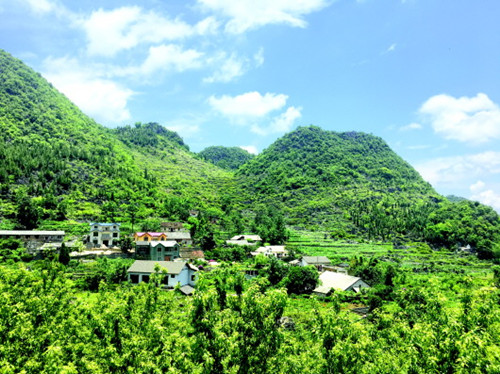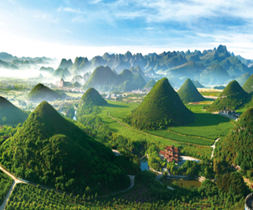Home>Updates
Mountains prove invaluable in Qianxinan
Updated: 2017-10-27
Lengdong village in Guizhou province's Qianxinan Bouyei sits tranquilly among lush trees.
However, things were not always like this. All the picturesque and idyllic scenery is the result of the prefecture's efforts to promote environmental protection and green development.
Qianxinan suffered more than any other area of Guizhou from karst rocky desertification in the past, with the desertification area taking up 29.9 percent of the prefecture's total area. Lengdong village did not escape the distress.
"The village had too many stones and rocks but inadequate land and water," said Zhu Changguo, head of Lengdong village.
To improve the living conditions, village officials suggested planting honeysuckles on the mountains after having learned from the experience of other counties in Guizhou.
The rocks serve as natural holders of the honeysuckles which don't occupy fields that could be used for rice and crops, according to Zhu.
So far, the village has a total planting area of 3,000 mu (200 hectares) of honeysuckles, earning more than five million yuan ($752,547) per year.
To further restructure the local industries and promote modern agriculture, the village continued to introduce more plants that are suitable to grow in hills, such as dendrobium and granadilla.
Xingyi Shoucaogu Co Ltd, a local company engaged in producing and selling traditional Chinese medicine, has inked a deal with Lengdong village to build a base for production and sale of dendrobium.
"The plants growing on hills not only protect the ecological environment but also generate economic benefits," said Zhang Bangjun, a manager of the base.
The company plans to invest some three billion yuan by 2020 to expand the planting area to 50,000 mu (3,333 hectares) and create 1,500 jobs for Lengdong village and its neighbors.

Green is the base color of Lengdong village thanks to local industrial restructuring. [Photo by Liu Yi/Guizhou Daily]
